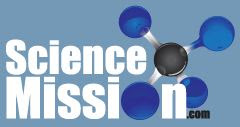DNA
Preparation and Analysis of DNA
INTRODUCTION:
The ability to prepare and isolate pure DNA from a variety of sources is an important
step in many molecular biology protocols. Indeed, the isolation of genomic, plasmid,
or DNA fragments from restriction digests and polymerase chain reaction (PCR) products
has become a common everyday practice in almost every laboratory. This chapter
therefore begins with protocols for purification of genomic DNA from bacteria, plant
cells, and mammalian cellsThese protocols consist of two parts: a technique
to lyse the cells gently and solubilize the DNA, followed by one of several basic enzymatic
or chemical methods to remove contaminating proteins, RNA, and other macromolecules.
The basic approaches described here are generally applicable to a wide variety of starting
materials. A brief collection of general protocols for further purifying and concentrating
nucleic acids is also included.
The last decade has shown a dramatic departure from the use of traditional DNA
purification methods outlined in with a concomitant increase in the use of
purpose-specific kits for the isolation and purification of DNA. For example, kits for
purification of DNA using pre-made anion-exchange columns packaged with all necessary solutions to lyse the cells and solubilize the DNA are available from many molecularbiology companies. A variety of kits based on binding of DNA to glass beads are also
available.
The uses of both types of kits are discussed in
The use of kits has two main advantages: it saves time and makes the process of DNA
purification a relatively easy and straightforward process. The purification of DNA by
anion-exchange chromatography is readily becoming the accepted standard for
quick and efficient large-scale (more than 100μg of DNA) production of DNA from
bacteria, mammalian tissue, and plant tissue. In most cases, the cell lysis and solubiliza-
tion of DNA is relatively unchanged compared to traditional methods, with anion-ex-
change chromatography columns having replaced labor and time-intensive techniques
such as cesium chloride centrifugation for the isolation of relatively pure DNA. Purifica-
tion kits are usually available in several sizes and configurations, allowing the researcher
to have variability concerning the processing and purification of their DNA.
A variety of techniques exist for the isolation of small amounts of plasmid DNA from
minipreps and for DNA fragments from restriction digests/PCR products from agarose
gels (with removal of unincorporated nucleoside triphosphates, reaction products, and
small oligonucleotides from PCR reactions).
These are detailed in Likewise, kits are available from several molecular biology companies, usually based on
silica-gel technology, for each of these applications). As with large-scale DNA
isolation and purification, these kits provide a quick and efficient means to recover
purified DNA that can be used for subsequent cloning or other modifications.
Virtually all protocols in molecular biology require, at some point, fractionation of nucleic
acids. Chromatographic techniques are appropriate for some applications and may be
used for separation of plasmid from genomic DNA as well as separation of genomic DNA
from debris in a cell lysate Gel electrophoresis.

